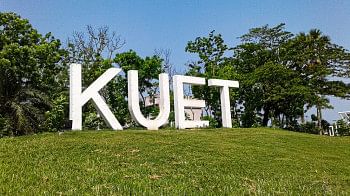Deadly lead in Dhaka air disabling children
Blood samples of patients reporting for unusual behaviour at Dhaka Shishu Hospital show presence of lead at least eight times the limit recommended by World Health Organisation (WHO), a doctor said.
It could be just the tip of an iceberg as many more children untested may be at risk, the doctor said.
"The tests done at Dhaka University and Bangladesh Atomic Energy Commission showed presence of 93 to over 200 micrograms of lead in the samples," Dr Naila Khan, a child Neurologist, told reporters yesterday.
WHO says that presence of more than 25 micrograms of lead per decilitre of blood is unsafe. If lead goes above 10 micrograms, says the American Centre for Disease Control, it can be dangerous for humans, facing long term problems like disability.
"Initial tests showed 'lead lines' on their bones which prompted us to send the samples to the only laboratory facilities available in the country," she said.
Her presentation came at a news conference at the Jatiya Press Club, arranged by Porosh or Paribesh Rakhkha Shopoth (pledge to protect environment), Bangladesh Centre for Advanced Studies, BELA, Study and Research Group and Dhaka Shishu Hospital.
Porosh president A.M.A. Muhith conducted the news presentation. Dr Amir Khan of DU Chemistry department, who tested the samples sent by Naila Khan, elaborated on her findings. Prof Feroj Ahmed of BUET and Afzal Sharif also participated in discussions.
They also strongly recommended that use of leaded petrol should be immediately prohibited along with the auto-rickshaws, whose two-stroke engines are mainly responsible for lead pollution in air.
The doctor undertook the study to find out why children had been behaving unusually at a certain age when they should have been normally walking or talking.
"We at the Shishu Bikash Kendra (child growth centre) have been watching patients suffering from serious nervous disorders, epilepsy and other problems for no apparent reasons," Naila Khan said.
"When the results came, it did not surprise us because it confirmed our suspicion that their mental growth had been curtailed by heavy air pollution," she said.
The centre at Dhaka Shishu Hospital mostly deals with patients from poor sections. On investigation, it was found that they lived in certain Dhaka city areas where traffic congestion was higher, such as near bus and truck terminals and in the midst of busy crossings, she said.
Such high concentration of lead tells on the intelligence level of children, retards their physical growth and expose them to various other problems in later stages of life, she said.
Dr Khan said she delved into a very small percentage of children who live in Dhaka. "Our worst fear is that thousands, may be tens of thousands, of children in the city are exposed to lead pollution."
At least nine million people live in Dhaka. It's air is heavily polluted with leaded exhausts from nearly 175,000 motor vehicles including more than 40,000 auto-rickshaws, which use leaded petrol with a mixture of engine oil. Experts say the mix is dangerous.
Officials said the government had taken a strategy to discourage import of auto-rickshaws, phasing them out in the next four years and importing unleaded petrol. But it would take sometime before the country's only oil refinery is fully equipped to refine unleaded fuel, Dr Amir Khan said.
The chemist said it would cost only 50 poishas more to refine the leaded petrol into unleaded.
On October 27, the Department of Environment (DOE) launched a drive against polluting vehicles. Till December, it tested emission level of 11,000 vehicles.
"The results showed that 8,200 vehicles have faulty engines and emit black smokes responsible for air pollution," a DOE official said.

 For all latest news, follow The Daily Star's Google News channel.
For all latest news, follow The Daily Star's Google News channel. 



Comments